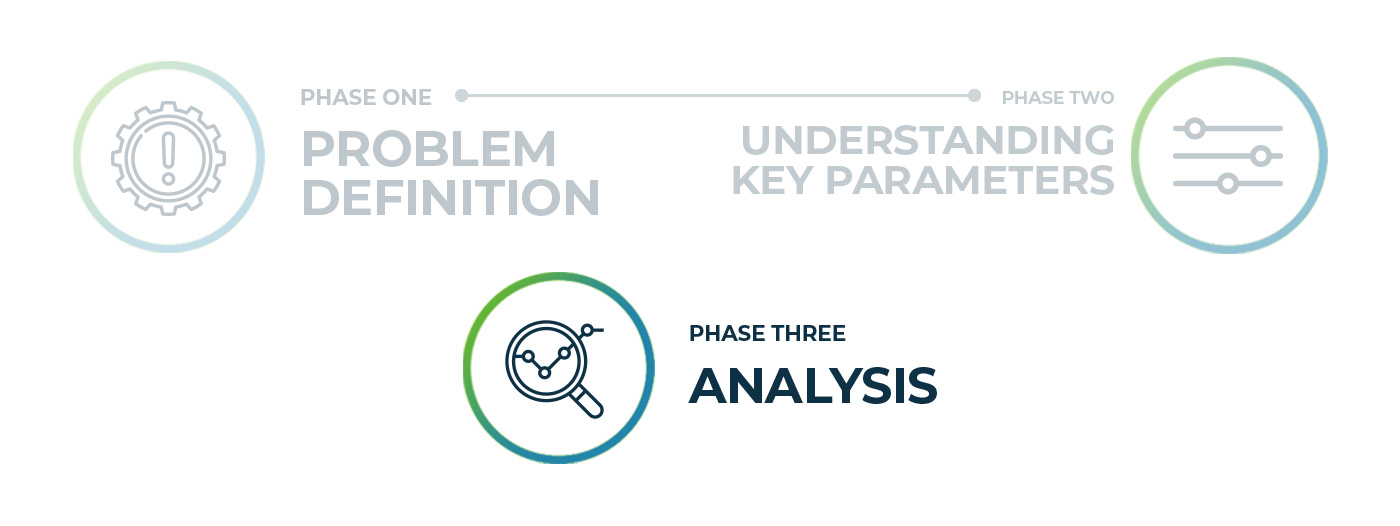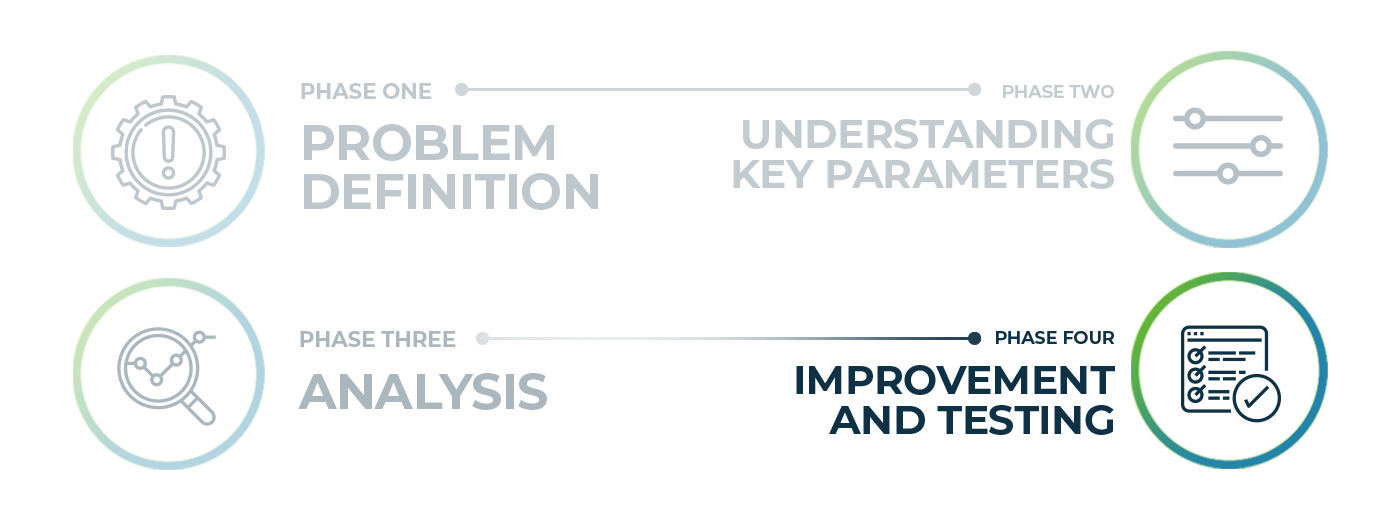Getting to the Heart of the Matter: The 4 Phases of Root Cause Analysis
September 28, 2020
When faced with a problem—simple or complex—we humans are conditioned to uncover a solution. And, in almost all cases, it’s imperative to find the cause before moving on to the solution. In fact, there are four common steps:
- Naming the problem
- Understanding the parameters of the situation
- Linking the problem to the parameters
- Identifying a solution and testing its efficacy.

In GxP manufacturing, the situation is the same.
By identifying and defining the four key phases of problem-solving—the root cause analysis—we define a playbook for success that we can utilize in the face of any critical issue, no matter its complexity.
Phase 1: Problem Definition
Of course, one would not be investigating an issue if the problem itself has not been defined. Basically, phase one is identifying the “what”: identifying, understanding, and accurately defining the problem at hand.

Phase 2: Understanding the Key Parameters
If phase one is the “what”, phase two would be the “why”. In this phase, the investigator works to uncover, identify, and understand critical process parameters associated with the issue.
There are several techniques that can be employed in phase two.
The first is to discover the history of the problem over time. This can be done by marking outliers, trends, and shifts in outcomes, as well as using a saw tooth diagram.
Another method is the use of Pareto charts: breaking a problem into its separate elements and prioritizing critical components for investigation.
Despite which method is used in phase two, the goal of identifying all possible parameters is to be able to move to phase three, where the association between the problem and parameters is identified.

Phase 3: Analysis
Phase three revolves around the association between the observed issue (phase one) and the critical process parameters (phase two). Here, investigators brainstorm and dive into statistical analysis, using a number of different techniques, such as a cause and effect or fishbone diagrams.
In this phase, it’s also important to consider the 6M technique, taking into account external factors supported by facts and data uncovered in the key parameters:
- Men (or women!)
- Machine
- Method
- Material
- Mother Nature/Environment
- Measurement
Arguably the most important phase in the four-step process, the analytical phase and its associative outcomes allow investigators to come up with a feasible solution to the problem at hand. And, it’s important to keep in mind that there may be multiple associations leading to the observed issue.

Phase Four: Improvement and Testing
Through the comprehensive approach to root cause analysis outlined in phases one through three, we’ve identified the problem, understood critical parameters, and linked the cause and effect. Now it’s time to solve the problem by removing the root cause.
By brainstorming the associations understood through phase three, investigators can then develop a Benefit:Effort matrix. This exercise helps decision-makers to determine the effort and impact of each potential fix and identify the most desirable solution to implement.
But, while you may believe that identifying and implementing the solution is the end of the cycle, you’re mistaken.
Key to a comprehensive root cause analysis is the verification of the desired result. By testing and observing the solution over time, investigators not only verify the effectiveness of their solution, but also rule out any secondary causes of the problem. In the case that the problem is again observed over time, investigators must revisit their initial observed associations to mark notable factors that may be hindering their progress and run through phases two through four.

While the idea of a root cause analysis may seem simple on its surface, it requires stringent adherence to traceable and replicable practices and procedures to ensure quality at the end of the line.
Interested in learning more? Join me at KENX’s Virtual Laboratory University, as I present, “Root Cause Investigation to Overcome Analytical Method Transfer (AMT) and Validation (AMV) Challenges”. During my session, I’ll take a deep dive into the four phases of root cause analysis and highlight a case study of this method in action.
A completely virtual event, KENX’s Laboratory University takes place October 5-7, 2020. For more information, visit KENX.org. Use code AZZUR200 to SAVE $200 at Registration.